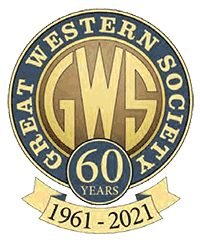A History of Frome North Box
The history of Frome North Signal Cabin is, thankfully, somewhat simpler than that of Radstock North Signalbox - though not, as we shall see, entirely without controversy. The box was named Frome No. 1 when built, later becoming Frome North, and then Frome Mineral Junction in preservation.
Although the box itself, being the first and only box on that site, was not built until 1875, it is perhaps instructive to look briefly at the history of the lines which it was later to control.
Railways to Frome
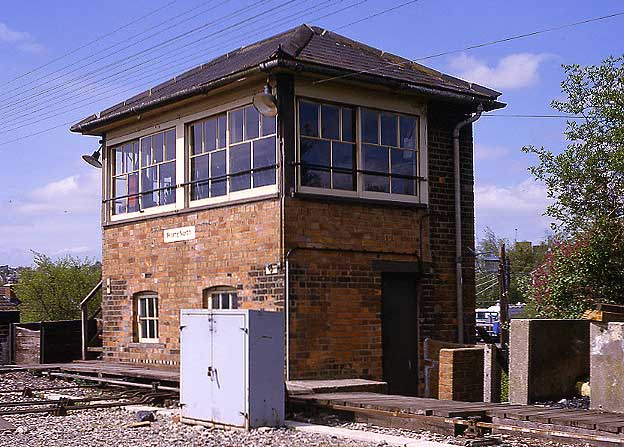
John Vincent - 1983
1844
On 9th July 1844, Brunel presented a scheme to the Directors of the GWR, for a railway from Thingley Junction to Salisbury, with branches to Bradford-on-Avon, Frome and Devizes.
This scheme in an expanded form, with the Frome branch extended to Weymouth, and the Bradford-on-Avon branch extended to Bathampton, became the basis of the Wilts. Somerset & Weymouth Railway.
(Phillips. 1994. p.11)
1845
The Wilts, Somerset and Weymouth Act was passed on 30th June 1845, and construction was begun by the nominally independent company, with Brunel as Engineer, and four of the twelve directors appointed by the GWR.
Phillips. 1994. p.12; Thomas. 1973. p.164)
1846
A supplementary Act was passed which, amongst other things, moved the junction of the Salisbury and Weymouth lines from Upton Scudamore to Westbury, with a consequent effect on the location and layout of the junction for the Radstock branch, which was later to be the controlled from our signal box.
(Phillips. 1994. p.13; Thomas. 1973. p.164; Vincent. 1990. p.24)
1848
The Wilts, Somerset and Weymouth company completed the Thingley Junction to Westbury section, which was opened on 5th September 1848, but had no further capital for constructing the rest of the lines
(Phillips. 1994. p.14; Thomas 1973. p.169)
1850
The Wilts, Somerset and Weymouth company was finally absorbed by the GWR on 14th March 1850. Thus the broad gauge single line from Westbury to Frome, which opened on the 7th October 1850, following an inspection on 27th September 1850 (Inspector's Report: TNA MT6/9/70), was completed under the auspices of the Great Western Railway.
(Phillips. 1994. p.14; Thomas. 1973. p.170)
1854
The broad gauge branch from Frome to Radstock, authorised by the same act of 1845, was inspected on the 23rd October 1854 [Inspector's Report] (TNA MT6/11/109) and opened for freight traffic on 14th November 1854.
(Phillips. 1994. p.15; Thomas. 1973. p.170)
The, Westbury facing, junction of this branch with the Frome-Westbury main line, known as Frome Mineral Junction, was later to be controlled by our signal cabin, but at this stage the single-lines on the route were all controlled by double-needle telegraphs located in station offices, and a system of train staffs.
(Phillips. 1994. p.25)
1856
The Frome to Yeovil line was opened as a single broad gauge line on 1st September 1856.
(Phillips. 1994. p.15; Thomas. 1973. p.171; Inspector's Report:TNA MT6/13/76)
It is not clear when the line through Frome Mineral Junction from Westbury to Frome was doubled, though it may well have been very early on. Certainly the 'GWR Regulations for Working The Single Lines of Railway by means of the Electric Telegraph' issued circa 1860 (TNA RAIL 1135/39) lists the lines so worked, which include Yeovil and Frome; Salisbury and Westbury; Bradford and Bathampton; but significantly not Westbury and Frome. This would imply either, that this section was not worked by electric telegraph; or, more probably, that it was no longer a single line. By the time that the first 'Return of Railway Signal Arrangement and System of Working' was required by the Board of Trade in 1875, this section is most certainly listed as a double line worked by Absolute Block (TNA RAIL 1053/187).
1863
At around this time double needle telegraph instruments were replaced with the single needle type, to control trains on the single line sections of the Wilts, Somerset and Weymouth routes. In the absence of signal boxes these instruments were still located in station offices. Westbury to Frome and Radstock to Frome are given as still being worked by single needle telegraph in 1873.
(Phillips. 1994. pp.25-26)
1874
All the lines in the area were converted to narrow (standard) gauge in June 1874. The last broad gauge train left Frome on 21st June 1874 and both tracks to Westbury were available for narrow gauge trains by 25th June 1874. Conversion of the Radstock Branch took place between 18th and 26th June.
(Phillips. 1994. p.24, p.107; Thomas. 1973. p.172)
1875
Major works were undertaken at this time to permit replacement of Permissive Block with Absolute Block (completed on all single track sections of the Wilts. Somerset, and Weymouth by 1874) and the general introduction of signal boxes concentrating point and signal levers in an interlocked frame, on the whole of the Bath to Weymouth line (completed by 1877)
(Phillips. 1994. p.26)
Considerable work was also undertaken in the Frome area to permit the working of a through passenger service between Frome and Bristol. The works included a new chord line (The West Curve) leaving the branch at the newly created Frome Mineral Loop Junction (or West Junction) and giving direct access to Frome station.
(Phillips. 194. p.18; Vincent. 1990. p.246)
The passenger line was inspected by Colonel Yolland on 25th June 1875 [Inspector's Report] (TNA MT6/142/10) and passenger services commenced between Frome and Bristol on the 5th July 1875. The local press declared that “The boon conferred upon the travelling public by the opening of this small branch is considerable” as the journey from Bristol to Frome could now be “accomplished in an hour and a quarter without change of carriage” as opposed to two hours via Bath and Westbury [Press Article] (BTM 6th July 1875).
Frome No.1 Signal Cabin Opens
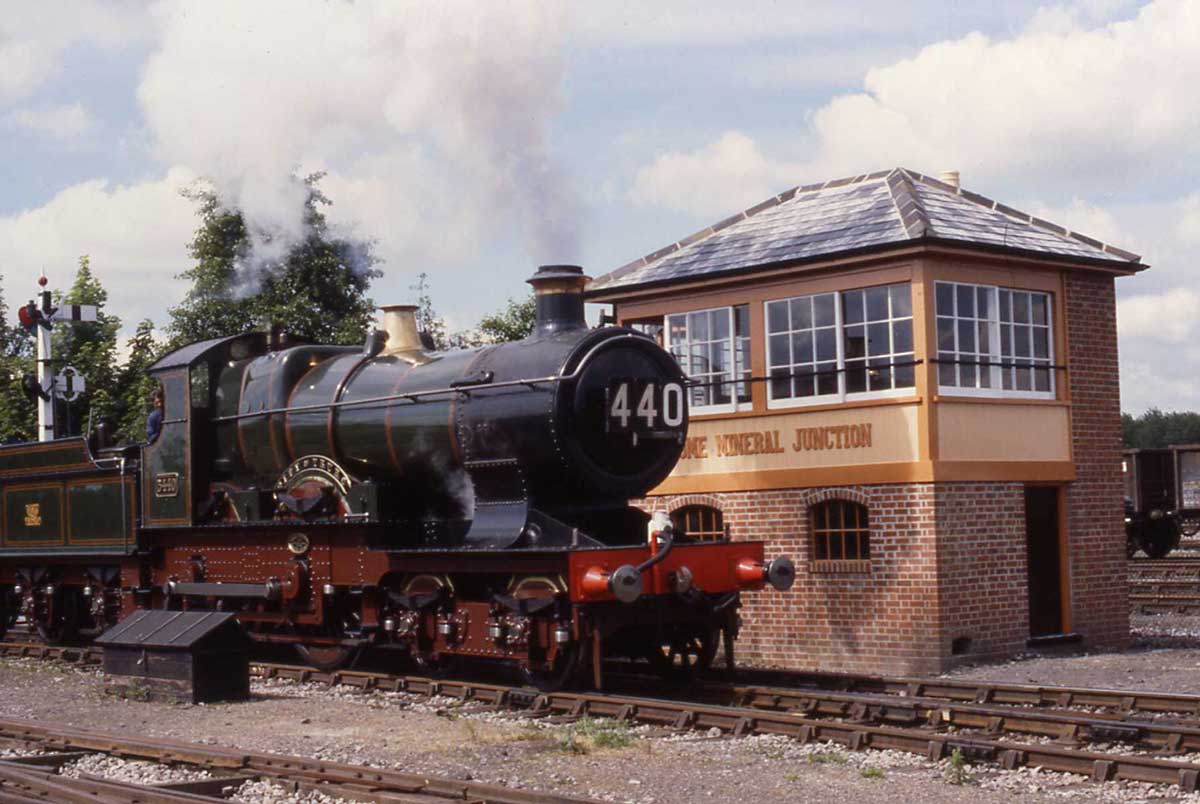
R J Heron 1989
Frome No 1 Signal Cabin was opened, as part of this work, to control the original junction for the branch. The works on the original line between this cabin and Frome Mineral Loop Junction (The Mineral Loop or East Curve) were apparently incomplete at the time of the inspection by Colonel Yolland (TNA MT6/142/10) and were not therefore passed, a re-inspection being undertaken by Captain Tyler on 18th September 1875 [Inspector's Report] (TNA MT6/150/5).
(Phillips. 1994. p.113; Vincent. 1990. p.61)
Frome No. 1 Signal Cabin, is typical of the type referred to by the Signalling Record Society as GWR Type 2, having a brick lower storey and brick back wall, with a three quarter prefabricated wooden structure, mounted on top.
(Signalling Study Group. 1986. p.161: Vincent. 1990. p. 246
Frome Number 2 (later Middle box), Number 3 (later South Box) and Number 4 (or West Box) were opened in the same year
(Phillips 1994. p.107)
A Controversy: Frome Mineral Junction
It has been suggested that the box was named 'Frome Mineral Junction' 'by 1895' (Vincent. 1990. p.246), but no evidence has so far been found to support this claim. The Working Timetables (TNA RAIL 937/xx) certainly refer to Frome No. 1 as early as 1880 and as late as 1896, in which year it was most certainly renamed Frome North.
It seems that whilst the junction itself may have been officially called 'Frome Mineral Junction' the box itself was never so named, until this name was conferred upon it, in preservation at Didcot, by the Great Western Society.
There is further confusion regarding the name of the junction itself; Colonel Yolland refers to 'what is called the North Junction' in 1875 (TNA MT6/142/10), whereas diagrams of the period shew it as Frome Mineral Junction. It has been suggested that it was popularly referred to as Frome Mineral Junction as late as the 1950's, though in the current working timetables it is shewn as Frome North Junction!
Neither is the term Frome Mineral Junction used exclusively to refer to the North Junction. Various GWR working timetables shew Bristol-Frome passenger trains passing Frome Mineral Junction where the routing is clearly not via North Junction. What is more the chainages from Frome Station to Frome Mineral Junction are given as 13ch in 1895 but 21ch in 1933. One explanation would be that the terms Frome Mineral Loop Junction or even Frome Mineral Loop Line Junction, originally used to refer to the West Junction, have become contracted to Frome Mineral Junction at some stage so that both North and West junctions have been so designated. The other possibility is that the entire triangle was known as Frome Mineral Junction at some period. Clearly this is potentially a major source of confusion.
With the commencement of passenger services it can be seen from the Working Timetables (TNA RAIL 937/xx) that the single line between Frome No. 4 (West) and Mells, which had been worked by staff and ticket, was subsequently worked by Train Staff and Auxiliary Disk Telegraph, the latter we believe referring to Disc Block Telegraph invented by Spagnoletti in 1863. That is to say the one engine in steam staff (or maybe staff and ticket system) was supplemented by a block telegraph system which indicated the state of the line, but had no physical linkage with the staff itself.
Note that all the lines directly controlled by Frome No. 1 (North) were double track at this time.
Another Controversy - The Electric Train Staff
Phillips makes claims concerning the Board of Trade pressing for the use of the Electric Train Staff in 1877, and alleges that a GWR General Manager's Report to the Board of 1880 states that Electric Train Staff working has been introduced on the Radstock branch and that the GWR had decided to retain its use after a trial period.
(Phillips. 1994. pp. 26-27)
This is however a misrepresentation of the situation, for the Electric Train Staff was not invented until the late 1880's and not used on the Great Western until 1891. The General Manager's report (TNA RAIL 250/691) in fact refers to 'Train Staffs' and not ' Electric Train Staffs' and the debate seems to have revolved around whether train staffs were required on single lines where disc block telegraph was in place.
(Kichenside & Williams. 1998. p.88; Vaughan. 1984. p.13)
1896
The signalbox was renamed Frome North, plates for Frome North, South, Middle and West, having been ordered on 22nd June 1895 (Signalling Record Society). This name change occurs between the January and May 1896 timetables (TNA RAIL 937/64).
In 2007 the Great Western Society were pleased to be able to purchase the original signalbox nameplate for Frome North Box. The plate is now on display at Didcot in The Signalling Centre.
1897
The single line section between Frome West Box and Mells Road began to be worked by Electric Train Staff at some stage between the May and October Timetables (TNA RAIL 937/67).
1902
Additional siding accommodation in the form of a single down refuge was provided at North Junction. The plan submitted to the Board of Trade prior to the inspection of these works is interesting for whilst the plan is headed 'Frome Mineral Junction' the signalbox depicted thereon is clearly labelled North Signal Cabin (TNA MT6/1105/2).
1906
The route past the box gained importance on 2nd July 1906, when the new direct double track route to the west via Castle Cary was fully opened to passenger traffic.
(Phillips. 1994. p.20; Thomas. 1973. p.173)
1933
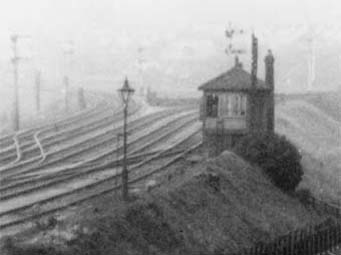
Brunel University, Mowat Collection; (a section of) M623
(This and other pictures are available from:
Mr Warwick Burton, 3 Fairway, Clifton, York YO30 5QA)
The traffic would have decreased again however with the opening of the two-mile Frome by-pass between Clink Road Junction and Blatchbridge Junction, in 1933 which allowed goods and express trains to bypass both Frome Station and the Radstock branch junction. Freight trains started to use the avoiding line from January and express trains from the start of the summer timetable.
(Phillips 1994. p.20; Thomas, 1973. p.173
Frome South Box and Frome Middle Box were replaced with a new Frome South box which took over the functions of both former boxes on 17th September 1933. Frome West Box was reduced to a ground frame on 24th September 1933, the single line section on the Radstock branch becoming Frome South - Mells Road.
(Phillips. 1994. p.29; Vincent. 1990. p.246)
At about this time, the west curve (South Box to West Ground Frame) was singled, and the Electric Train Staff instruments between Frome South and Mells Road were replaced with an electric token system.
It is unclear in which order these actions took place, as whilst the Inspector's visit was requested in December 1933 it did not actually take place until 29th June 1935 [Inspector's Report] (TNA MT29/90 p.112). By this time all of the works listed were complete but there was apparently still some track circuiting going on at the south end of the station.
It is possible that as a temporary measure the Electric Train Staff apparatus was moved from West Box to the new South Box but if this is so it remains unclear how trains coming onto the branch from North junction gained access to a Staff, when required. By the time of the Inspector's visit, token apparatus was in place and an intermediate token instrument was provided at Frome West Ground Frame, for use of trains coming onto the branch via the North junction.
1947
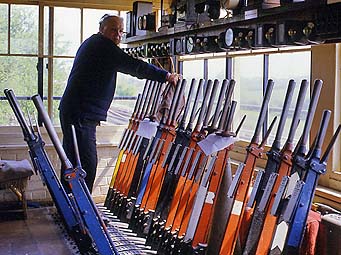
John Vincent - 1983
Plans were produced to substantially rebuild the box. The plans, from the GWR Signal and Telegraph Engineer's Office at Reading (ME.5408. GWS Collection) dated 24th June 1947, show proposals to remove the existing timber framing and roof of the box completely, brick up to the underside of the new sill level and to new brick gables and to install completely new woodwork. Also to shore up the structure with four RSJ's below rail level and substantial rebuilding of the existing brickwork. At this date it is interesting to note that the box had already acquired a porch which is not thought to be part of the original structure. Clearly not all of this work was ever carried out, though at some stage new windows were fitted and the brickwork was extended up to sill level replacing the original vertical boarding under the windows.
1959
The Bristol to Frome Line was closed to passengers on Saturday 31st October 1959 [Press Article] (WDP 2/11/59) [Press Article] (BC 2/11/1959).
(Phillips. 1994. p.22; Vincent. 1990. p.156)
1963
The West Curve, between West Ground Frame and South Box, was closed on 10th November 1963. Presumably the token instrument for the line to Mells Road was moved from Frome South Box to Frome North Box at this point.
(Phillips 1994. p.117; Vincent. 1990. p.159)
1966
The line north of Mells Road to Radstock was closed on 15th August 1966 leaving only the stone trains from Whatley Quarry, and a few other minor sources of traffic in the Frome and Mells area, served by the branch from Frome North.
(Vincent. 1990. p.163)
1968
The line from Mells Road to Radstock was reopened following the closure of the Radstock to Bristol section on 10th July 1968 bringing the Radstock coal trains via Frome.
(Vincent. 1990. p.163)
The remaining double track section, of the former triangle, between Frome North Box and West Ground Frame was reduced to a single line on 11th August 1968 with the up branch converted to a siding and all Radstock Branch traffic running over the former down line.
(Phillips. 1994. p.117)
1970
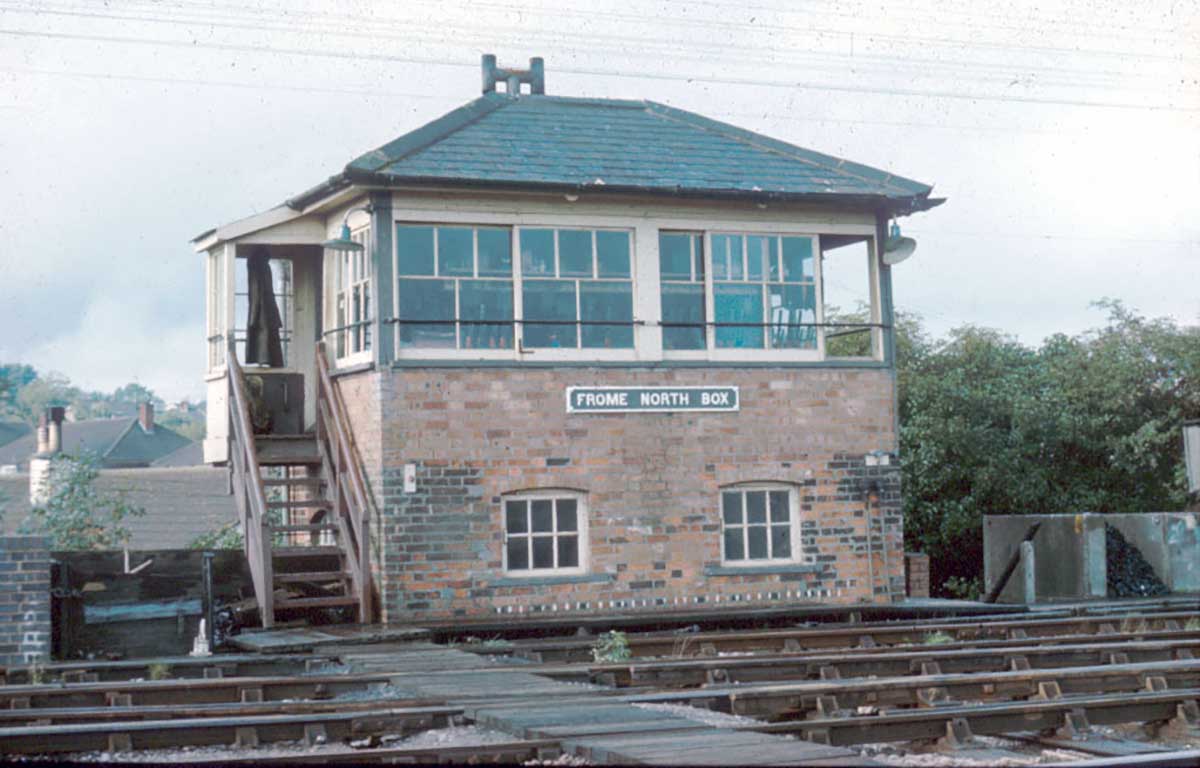
A R Hook Sep-1975
A new frame was installed in the box, and brought into operation on 19th August 1970. This frame, probably the third in the box's history, was a 34 lever Vertical Tappet frame from Marsh Junction Box, in Bristol. (This frame has now been installed at Crowcombe on the West Somerset Railway). Tracklaying and resignalling also took place at this time with the effect that the line from Frome North to Blatchbridge Junction was singled, track-circuited throughout, and controlled by Acceptance Levers. Also a direct facing connection was made at Frome North to avoid the need for trains to reverse into a siding before entering the branch.
(Phillips. 1994. p.32, p.117, p.113; Vincent. 1990. p.247)

By this time No Signalman Electric Key Token (NSKT), D Configuration, was in use between Frome North Box and Mells Road, with intermediate instruments at Frome West Ground Frame and Somerset Quarry Siding.
(Vincent. 1990. p.250)
1984
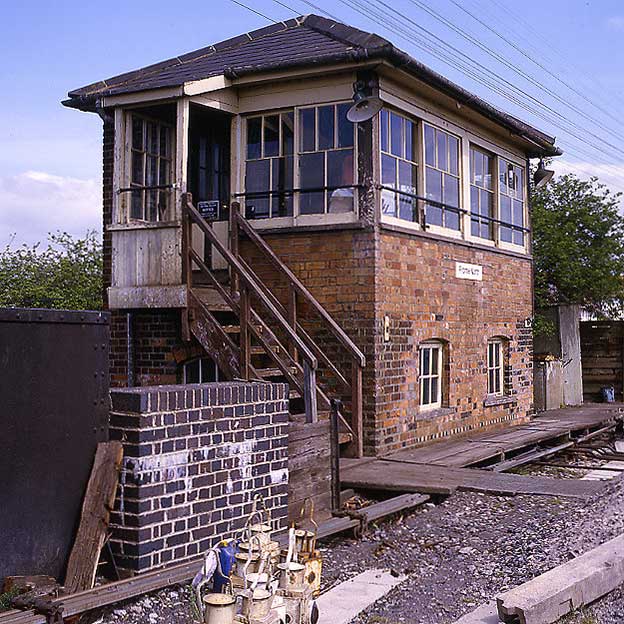
John Vincent - 1983
Although all the routes originally controlled by the box remain in use to this day Frome North Box closed on 6th October 1984, with all the lines in the area being brought under the control of the new Westbury Panel Box on 8th October.
(Phillips. 1994. p.113; Vincent. 1990. p.247; Vincent. 1990. p.249)
The box top was removed on a low loader by the Great Western Society on October 28th 1984 and subsequently transported to Didcot Railway Centre.
The story of Frome North box continues with its move to Didcot Railway Centre in 1984 ...
As well as the published and public sources quoted above, I should like to thank: Chris Osment and Tim Venton, and also Derek Coe, Reg Instone and John Morris of the Signalling Record Society, who have all provided assistance with this research.
(Section still being researched)
